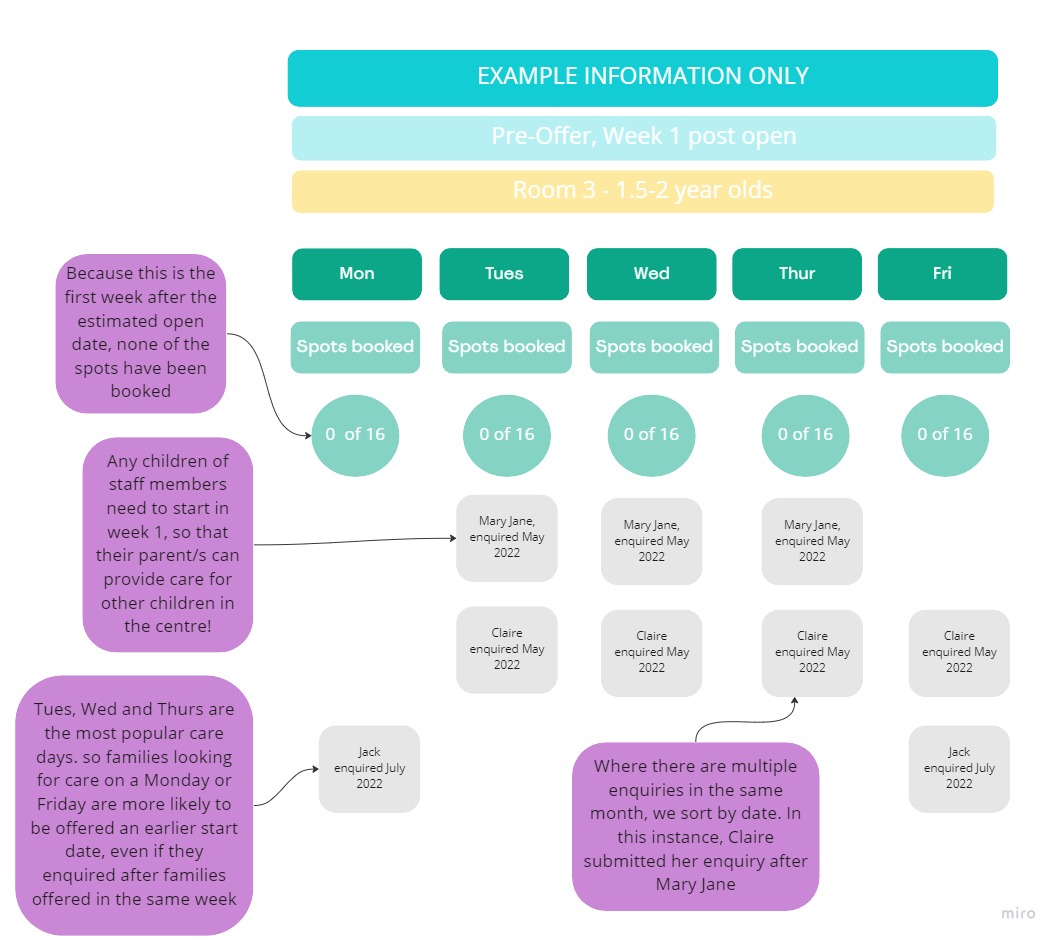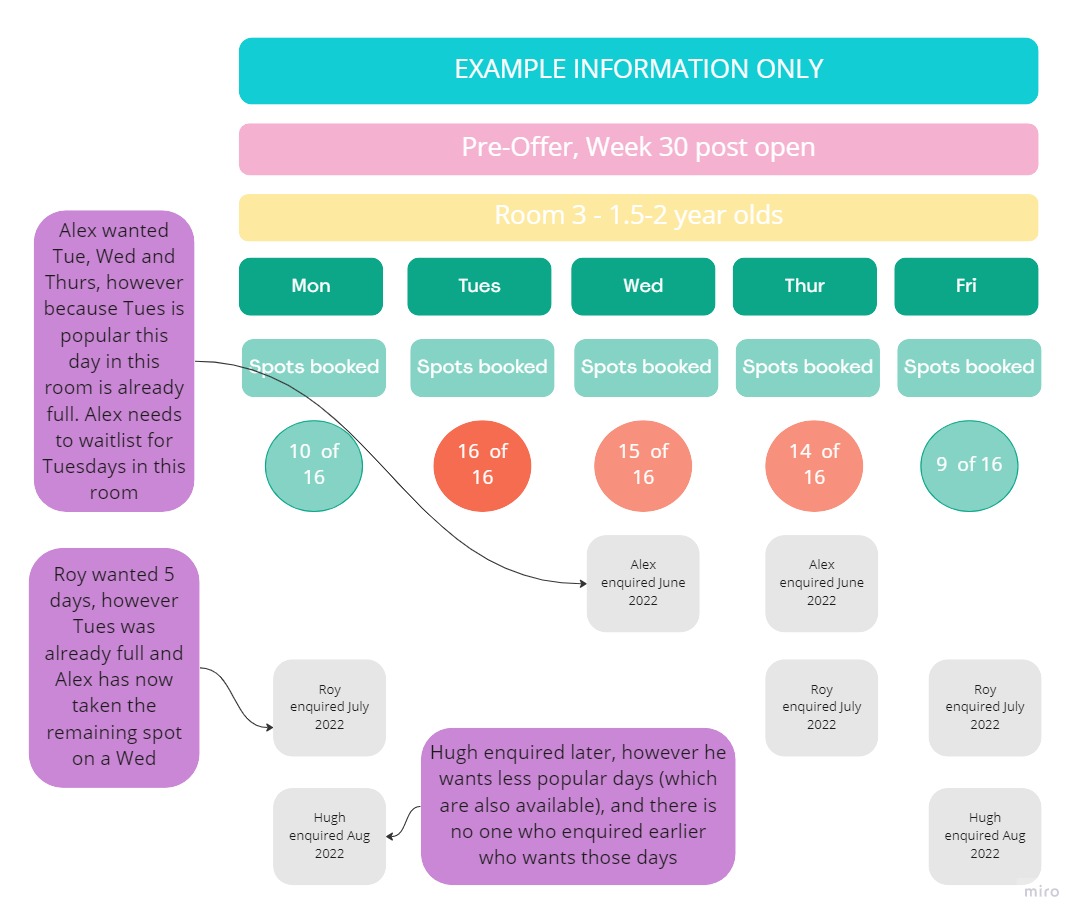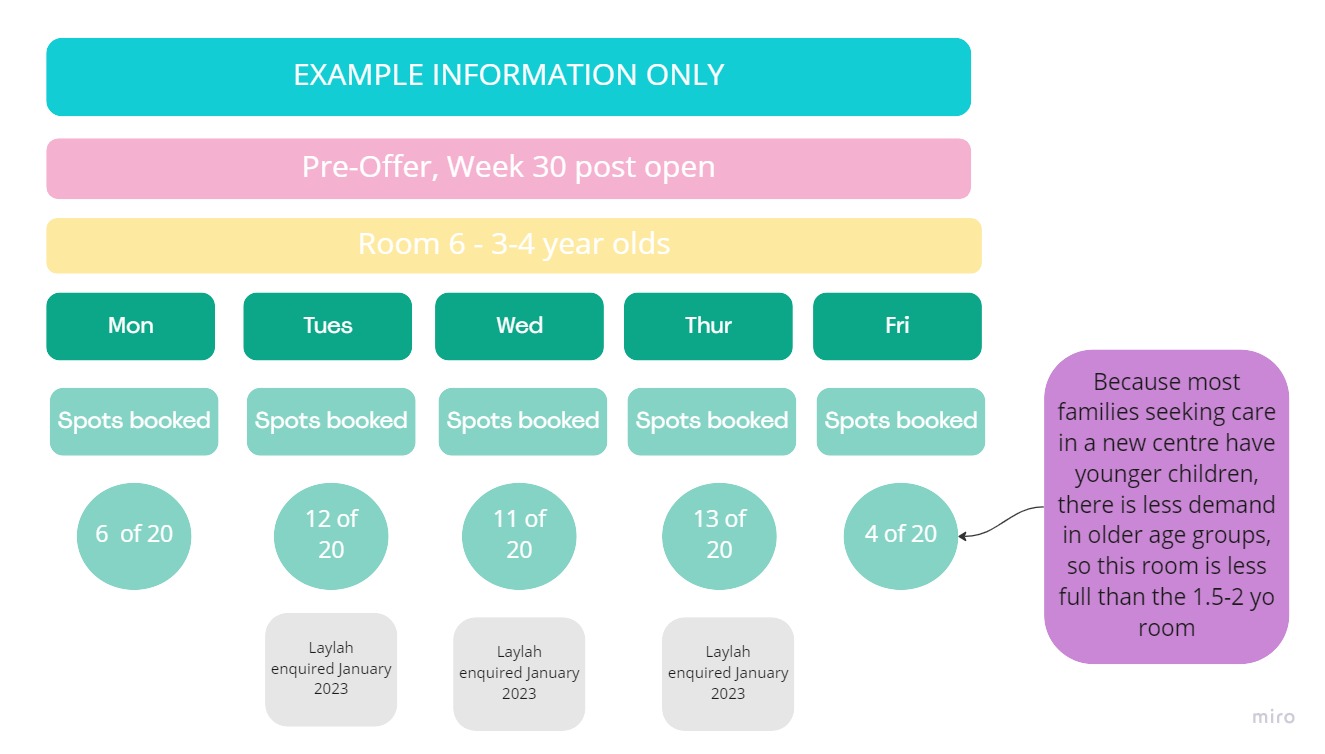In November Futuro posted an article on childcare waitlists (‘Childcare Waitlists Explained’). However, we’ve had so many queries from families about how waitlists work that we thought we would do a follow up post that provides a more in-depth look at different aspects of the process. What follows is not a fixed set of rules for how things are done, as it is different across different centres, but rather attempts to provide some context for how waitlists are managed generally.
What number am I on the list?
Families often ask ‘what number am I on the list?’ Yes, there is a list – however it’s constantly changing as new children are added and as existing families change their care needs.
We know that it’s super frustrating to have no idea what the likelihood is that you will get a spot when you need it, and particularly if you have been looking for care for many months. We have been in that situation ourselves and know it well!
New centres will usually work steadily though each week after they open to fill available spots in their centre evenly across all age groups. Existing centres will usually work to fill empty spaces created by children moving on to formal schooling in the months of December and January.
As a general rule, centres won’t be able to keep a spot empty for a family that wants it in 6 months’ time if they have a family prepared to take that spot tomorrow.
You are a new centre, you should be empty right?!
Quite right! Futuro’s Gledswood Hills centre has space for 119 children each day. On average, families are seeking 3 days of care per week for their child. So in a 119 place centre it’s possible to accommodate quite a lot of children. However, we can’t welcome 119 children into the centre on day 1.
It’s important to balance what you can do, with what you should do. The Futuro team has a lot of experience opening new centres. We have seen that if you take too many new children into the centre too quickly it can be difficult to offer the children the time they need to settle in. In turn, this can place staff under undue pressure trying to make sure that they provide safety, stability, and education for all those new starters.
What that means is that we stagger the intake across weeks and across rooms to ensure a smooth start to care for everyone. If children start and settle in quickly, you may be invited to start sooner than your original offer date.
Can’t you just change the ages in the rooms to accommodate more children?
In designing a centre, the architect will usually try and split the age configuration evenly between children aged birth-3 and 3-6. Those rooms are then resourced with amenities (nappy change spaces, cot rooms etc), furniture and toys that are appropriate for that age group. The split between age cohorts also makes sense if you think about the fact that each age cohort will shift up with the passage of time and you need ample space to accommodate them as they do so.
Priority of access
As a matter of practice, children already enrolled in the centre will get priority for available days. So for example – a parent may want care on a Monday, Wednesday and Friday, where only Monday and Friday are available in their child’s age group. They would waitlist for Wednesday and if a spot on a Wednesday comes up in that age group, they would be given priority of access to that spot.
The next level of priority is typically given to siblings of children already enrolled at the centre, noting the desirability of having siblings attending on the same days.
In addition to the foregoing, the NSW Government has recently introduced a requirement for centres to give priority of access to children over the age of 4 who are:
- From low income families
- From Aboriginal and/or Torres Strait Islander families
- With disability and/or additional needs
- With language needs
- At risk of significant harm (from a child protection perspective).
And finally, if you are in a difficult personal situation and need care, please let your centre know. If you are a single parent, the victim of Domestic or Personal Violence, or there are other extenuating personal circumstances, let the centre know.
Mondays, Fridays & Public Holidays
Many families choose not to enrol on a Monday or a Friday to minimise the chance that they will have to pay for a day when the centre is closed. This means that there are often spots available on Mondays and Fridays. This is where flexibility on days of care helps - sometimes you can start with a Monday & Friday, and work your way up to the days you would prefer.
This is a great time to remind families that Futuro doesn’t charge for public holidays! So please don’t hesitate to waitlist for whatever days suit you best.
Single days of attendance
In some instances, a single day of care may be all that you can get. In other instances, families prefer a single day of care either because it’s the only weekday that they work, or because they have alternate care arrangements on the other days.
Whilst we understand why some families would prefer to have their child in only 1 day of care per week, it can make it very difficult for the child to settle into care and as a result, we don’t recommend it. When children are young, a 6 day gap between days in a care setting can seem like an eternity. By the end of that day, they may be comfortable and know their care givers, but by the time 6 days has passed, everything can feel foreign when they come back.
Examples
The following diagrams explain how the general principles above work in practice.
The first diagram gives an example of a new centre, offering spots in its first week of operation in a room designated for 1.5-2 year olds.

The second diagram shows a room for children aged 3-4, in the same first week following open.

Now we fast forward a few months, a lot of spots in the rooms have been filled. Again, looking at the room with the younger children…

And again – what the older room looks like:

And finally...
Families’ care needs can change in a matter of weeks – unanticipated trips overseas, moving to a new suburb, a change in working patterns… Things can change quickly – so don’t despair!
Need further advice or have more questions? Don’t hesitate to reach out to the team on enquiries@futuro.nsw.edu.au!

